John Butler: “First: write a good song. Second: work your ass off. Third: get people’s attention”
The Australian songwriter reflects on the lessons learned across two decades
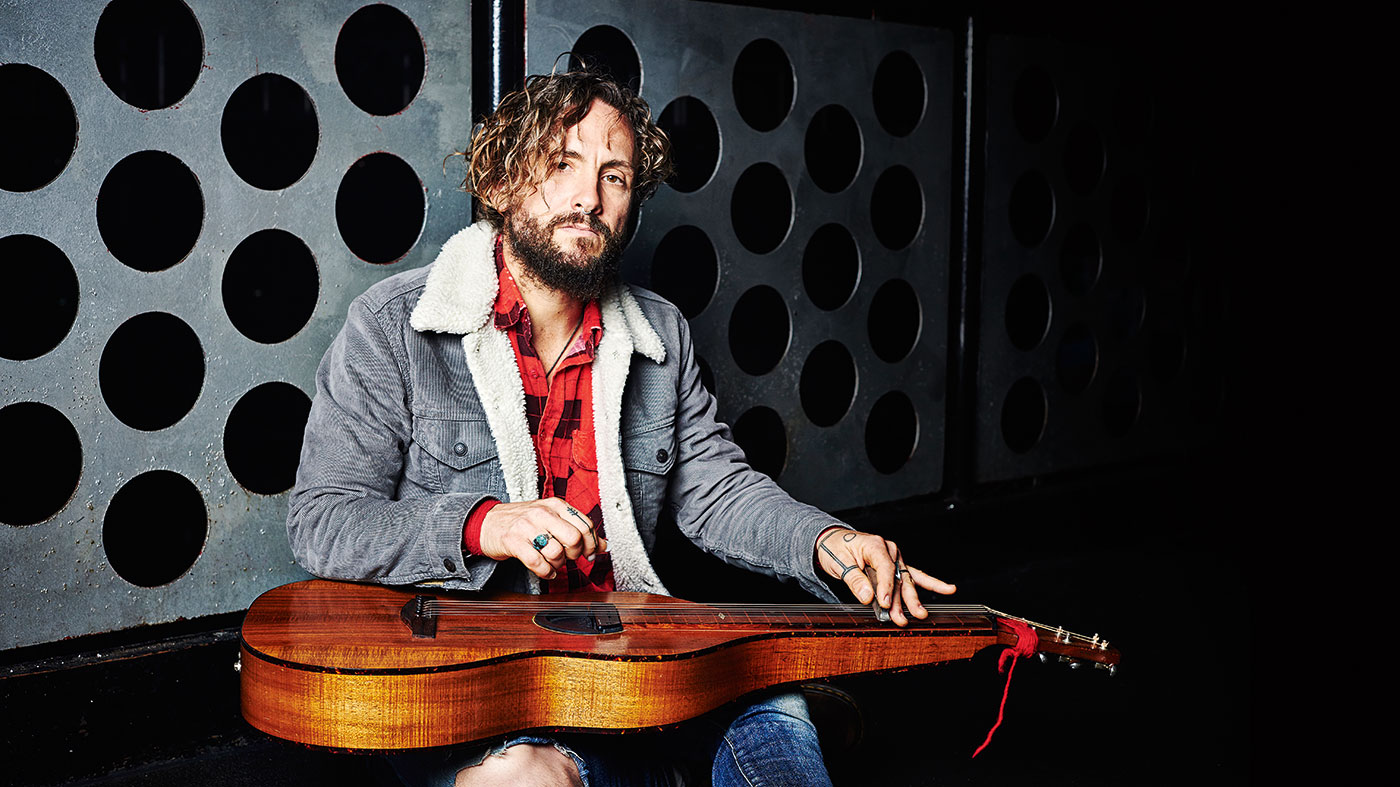
He’s 20 years into his career and Australia’s biggest independent artist, but that doesn’t mean John Butler is afraid to step into the unknown as a musician. He guides us on his inspiring journey to new album, Home, via india, iPad demos and stargazing...
Even for an artist whose willingness to explore genres transcended the description of ‘roots’ musician long ago, Home marked a dramatic change in the studio for John Butler - largely without his band.
“It just wasn’t flowing the way I wanted it to flow,” he explains to us. “I found that around the second session I was way too sensitive to everything and the more people that were around, the more complicated it seemed to get. And not because of them, because of me. I just need to really simplify everything to get out this idea that I had.”
As we’ll find out, technology played its part too. “A lot of my demos are pretty much how the album is, though recorded more sub par! So I really wanted to make sure all those ideas came out. I was feeling like I was asking people to play what I wanted them to, as opposed to a creative process. And I was aware of that and a little paranoid about it I guess.
“But I needed to make the music I needed to make, so the best way to do that was by myself with a producer. I would have done it by myself but I didn’t know how to work all the gear. So I needed to work with someone who I really trusted. I just needed to get everything that I had out. But a lot of it was how it was pre-produced on my iPad…”
Apple source
How GarageBand on the iPad played a massive part in Home’s creation
“The iPad was the biggest change in terms of gear for this album. That was the thing that really allowed me to create something new. It was GarageBand, that’s how [demoed] did the whole album. I bought this iPad only for GarageBand. I’m a guitarist but I have so many ideas in my head all the time. I use it to practise with too. It’s been the biggest tool for me and has enabled me to create the new worlds I’m going to go and play guitar over.
Want all the hottest music and gear news, reviews, deals, features and more, direct to your inbox? Sign up here.
I play a lot of beats in the shower on the wall and the iPad helped me pre-produce the things I’m hearing in my head
“The coolest thing is I’ll have a beat in my head and I won’t have to wait for two months to be in a studio or soundcheck with G [Grant Gerathy, drums]. I can be making the beats now. I play a lot of beats in the shower on the wall and the iPad helped me pre-produce the things I’m hearing in my head. As a simple musician luddite like myself, I can do things really quickly!
“As far as coming into the studio with formed ideas, this album was more so that way than any before. That’s why I probably had everyone stand back before I was ready. Because I had to get those ideas out first. It was really quite a specific vision and I think it made the flavour of this album the way it is. And a lot of the sounds on the album come from the iPad. There’s a whole bunch of synthesisers I haven’t been able to get anywhere else.”
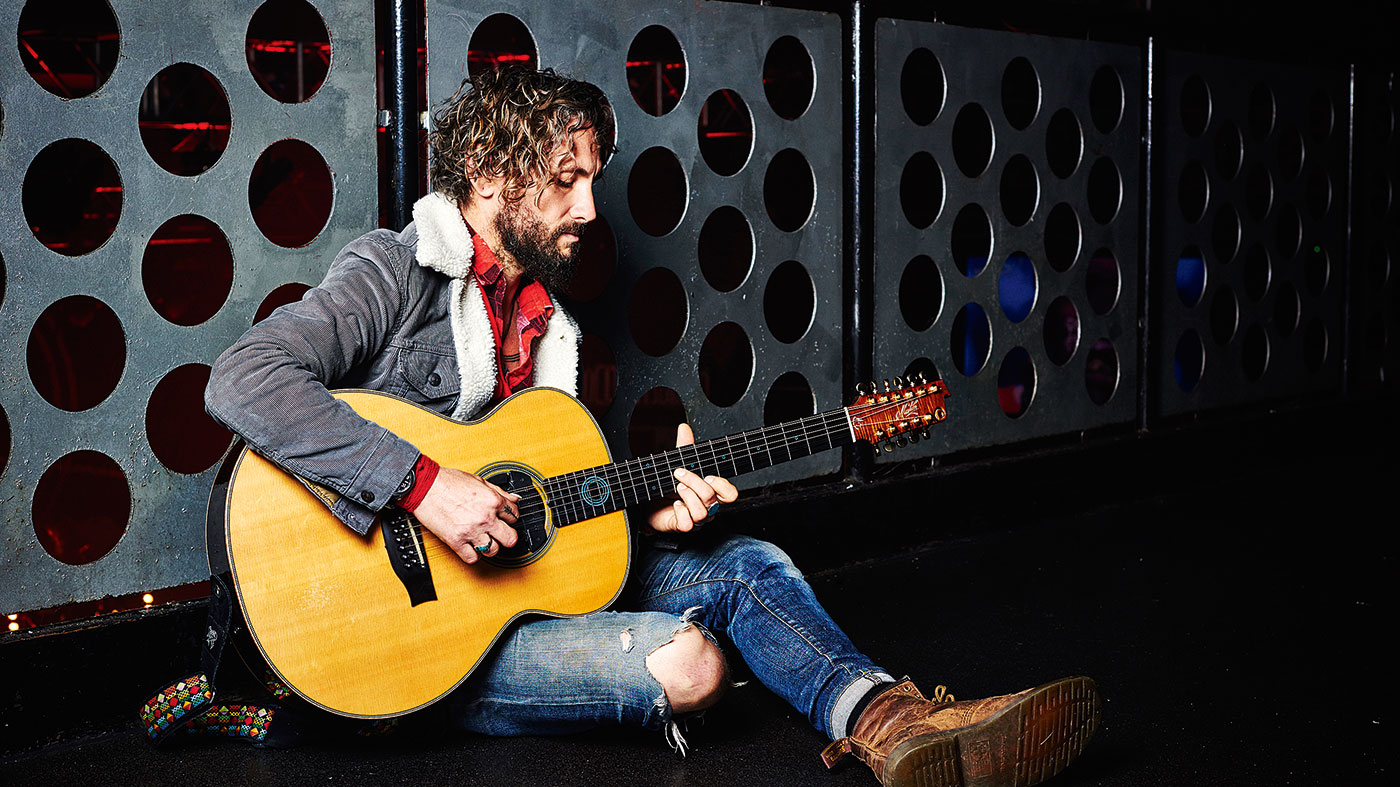
Obey your master
Serving the song can sometimes mean questioning your preconceptions as a player
“I wrote the song Faith camping with my son. He had gone to sleep and I was just playing, looking up at the stars and it came out. I continued writing the song over the next few weeks and I had a solo totally worked out [John picks up his guitar and plays us a very different bluegrass-style fingerstyle solo] and I had practised it heaps. I don’t usually practise solos but I’d sat on the song for so long and I’d really worked out how I was going to do this double thumbing technique.
“But it was like the song, being the boss, was saying, ‘Boring!’ The song was so over it. It was a boring solo… So by the end of doing 15 takes of that one technique I started doing that technique instead, which is on the album; that psychedelic hammer on, hammer off Schism-y kind of playing. Because the song was played to a click I was able to get a delay right in time and ride the delays in and out on the solo. And it totally made sense for the song at the end of the day.
“I’m not afraid to fight my own preconceived ideas; I have to let my instinct prevail. Because with my own preconceived ideas of being a guitarist and a human being, I might think things should be a certain way. But I’m not in charge, nor should I be. I work for the song and the song knows best… and it’s not the double thumbing thing I’ve been really wanting to do for a long time. Because that’s all about me. It’s not for the song. That’s me and my technique and it’s boring. Technique is awesome if it serves the song. It’s all there to serve. Sometimes we can let our egos ruin a song with technique.”
Lightning in a bottle
Song ideas can drift away if you don’t use them, with rare exceptions…
“Most songs leave. Elizabeth Gilbert is an author and she wrote a book called Big Magic, it’s a great book for anybody who is slightly creative. She says ideas will come to you and if you don’t help them come to life they’re like, ‘See you later’ and they’re off to someone else.
When you have a good idea and you don’t do anything about it and you see it pop up somewhere else... Well, you did nothing about it
“When you have a good idea and you don’t do anything about it and you see it pop up somewhere else and you say, ‘Hey I had that idea!’ Well you had that idea and you did nothing about it. So I would have expected the riff for Just Call to do that. But I was the only person who was going to help it. It’s like that Bruce Willis film with, ‘I see dead people’, or the Whoopi Goldberg movie where she sees dead people.
“I guess that song could only live through me, but I’m surprised it didn’t piss off! I didn’t forget it and I forget hundreds of songs. I do record ideas but I’ve forgotten half of what I’ve recorded and then I’ve forgotten half of them before I hit the recorder. There’s something about that song that stuck.”
Yoda and Skywalker
How John Butler first fused the electric and acoustic worlds in his sound
“It came on really quickly when I think about it. When I was busking I always went through an amp and then I’d go to play these gigs and think, ‘This isn’t quite right.’ Then I’d have an amp and DI going at the same time so it was kind of a clean sound.
“But the real moment, a crossroads moment, was Jeff Lang. An amazing guitarist and singer-songwriter. He’d have his acoustic going off in one direction then he’d drive in this distorted slide amp on the other side. I was opening up for him one night and I watched him and his foot and my mind was fucking blown. I remember going up to him as a hopeful young Skywalker going, ‘Yoda… can I do that?’ And I asked him, ‘That thing with the volume pedal, can I do that?’ And he looked at me like, ‘Sure you can do it, no one is stopping you.’ And I never looked back.
“All the effects and all the bullshit aside, an acoustic pickup into a DI, preferably a magnetic pickup, that goes straight out to a PA. Then [the piezo] goes to a distortion pedal and a volume pedal into an amp. It changed everything. It’s like the song Faith - it allowed me to go from blues, country folk fingerpicking to distorted, psychedelic flanger, delay in one fluid motion. And for me, not being a purist, that was all my world. I could do the bluegrass banjo picking I love and then just rip into metal - awesome!”
Same difference
The biggest challenges now are the same challenges as always
The music industry has changed, but John says the core challenges for making yourself heard are the same as always
“The biggest challenges now are the same challenges as always. First: to write a good song. Second: work your ass off. Third: to get people’s attention. You can get people’s attention easier nowadays but there’s so much data it becomes as hard as ever. You used to be able to put an ad out in a newspaper but nobody buys the newspaper anymore. It’s easier to get an ad out but how do you get people to see it?
“A great colleague of ours, and I don’t where she got this from, said that the definition of luck is when preparedness meets opportunity. And so I think as an artist you have to just keep on practising your craft... Doing it often and working on how to write a good song. And if you do that, when the opportunity arises you’ll be prepared. And that’s what luck is. Work your ass off, don’t expect anything for free. There’s a lot of really talented people out there who deserve just as much attention as you. If there is a bit of luck involved and someone is at that show, whether the BBC or anyone else, hopefully, you’ll be prepared enough for that opportunity.”
John Butler's gear
John and his tech Pat Meyer give us a tour of the new additions and old friends since our 2014 Rig Tour
Pedalboard
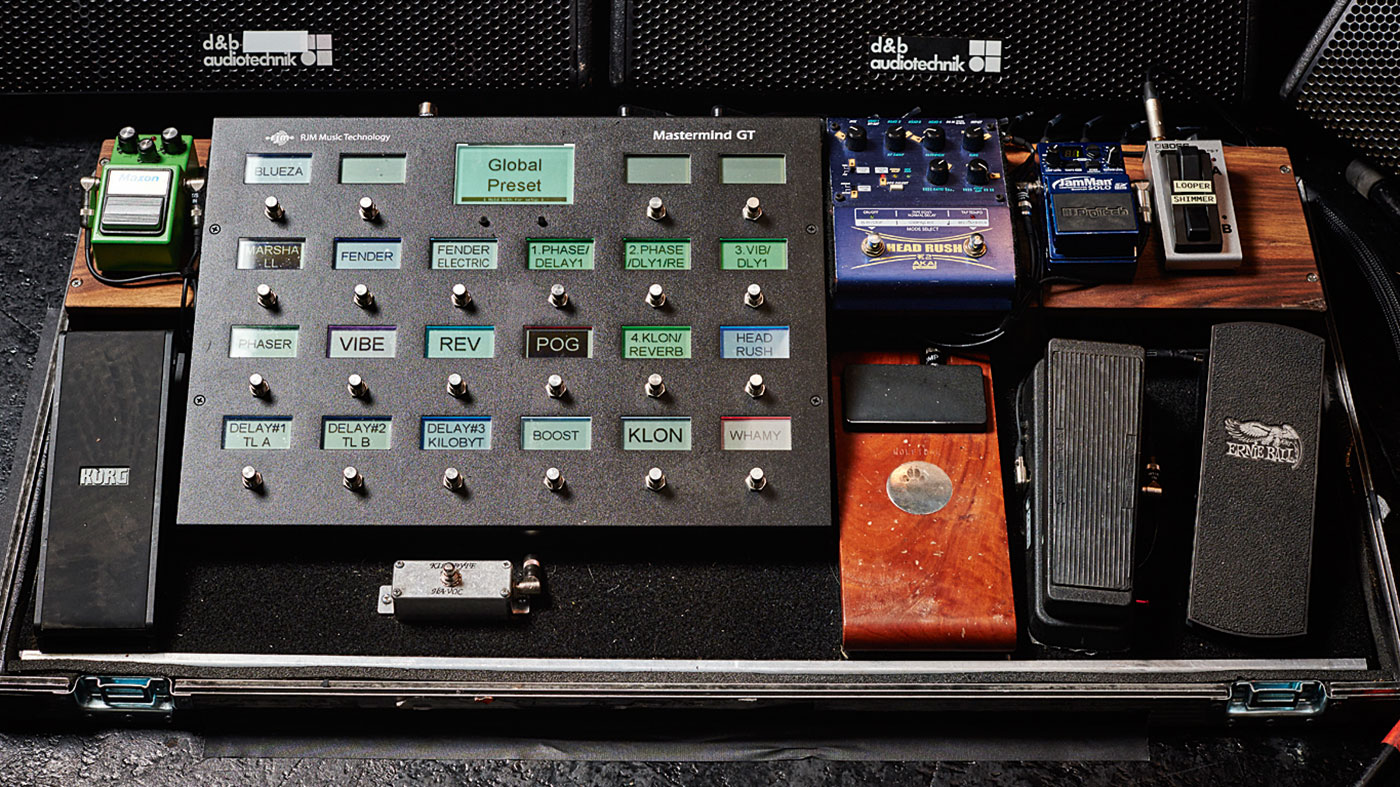
RJM Masterm ind GT/22 Midi controller
Pat: “When I joined he had the One Control Crocodile Tail just to put everything on a loop because he stamps on things… and breaks them. Then that got outdated because he just kept building on it. I went to the RJM stuff because he wanted something with a lot of instant access and some presets, but it all still had to be flyable. The Maxon 808 is on all the time, except for one song when he plays his Weissenborn. The Akai Headrush is used in the intro for Betterman when he goes on the nut side with the slide to get that real chimey kind of vibrato. It gives him something to play over.
“He’s got a two pickup setup on the bridge side of his acoustic now so he has the DigiTech JamMan for percussive loops. Then we have that running into the Gig Rig Loopy 2 for the bridge pickup side.”
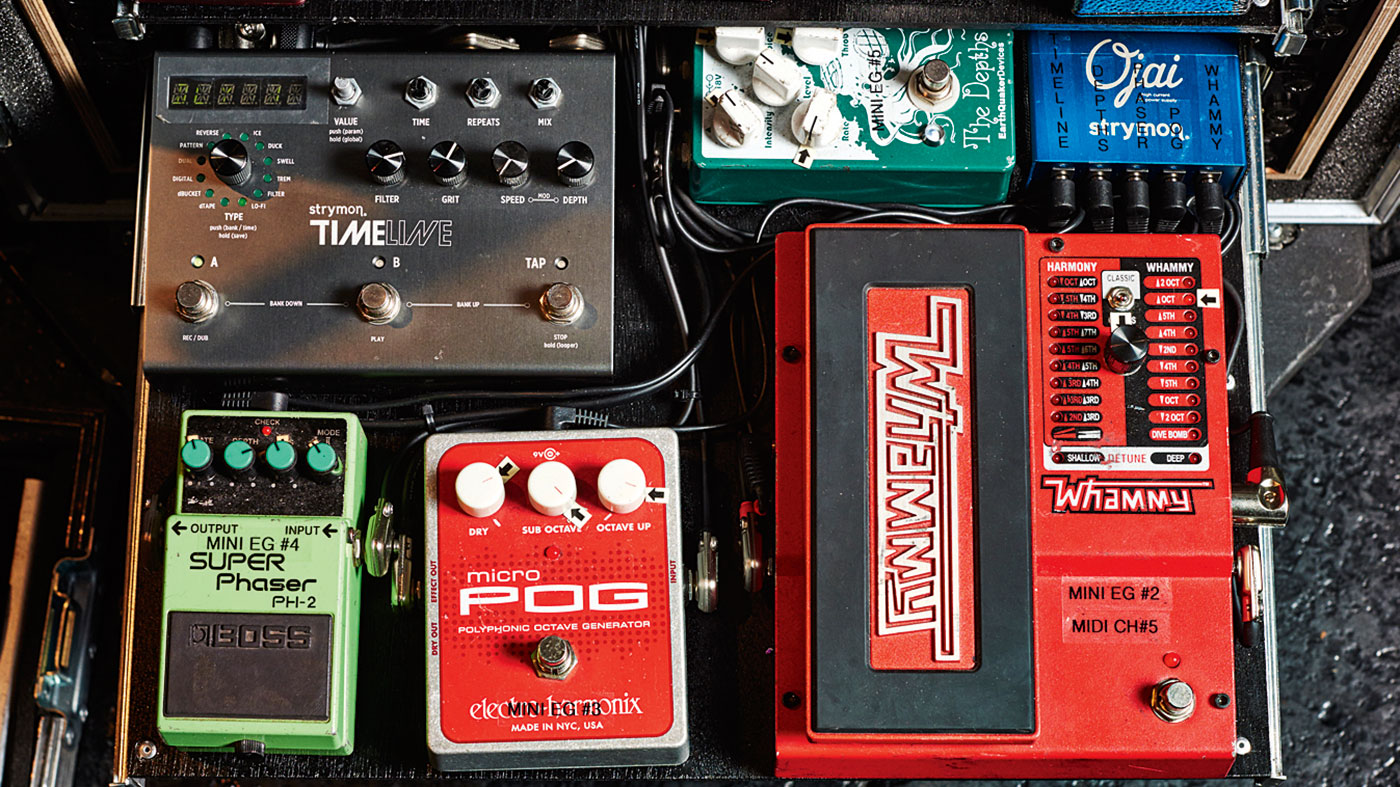
John: “Pat put this together and it’s great. It’s a little more user friendly. I’ve used looper systems for a while, and switcher systems for a bit and eventually they all get to the point when they stop working because they get old. So this is the latest upgrade that just allowed me to have enough buttons to use all the different effects that I want and then to have a few buttons that fuse them as well. I hate scrolling through pages and shit. I like everything to be on one page with one button each. I’d happily use just a bunch of pedals but it’s too hard, I’m tap dancing. I want to make it easier for myself but I don’t want someone side of stage changing them for me.”
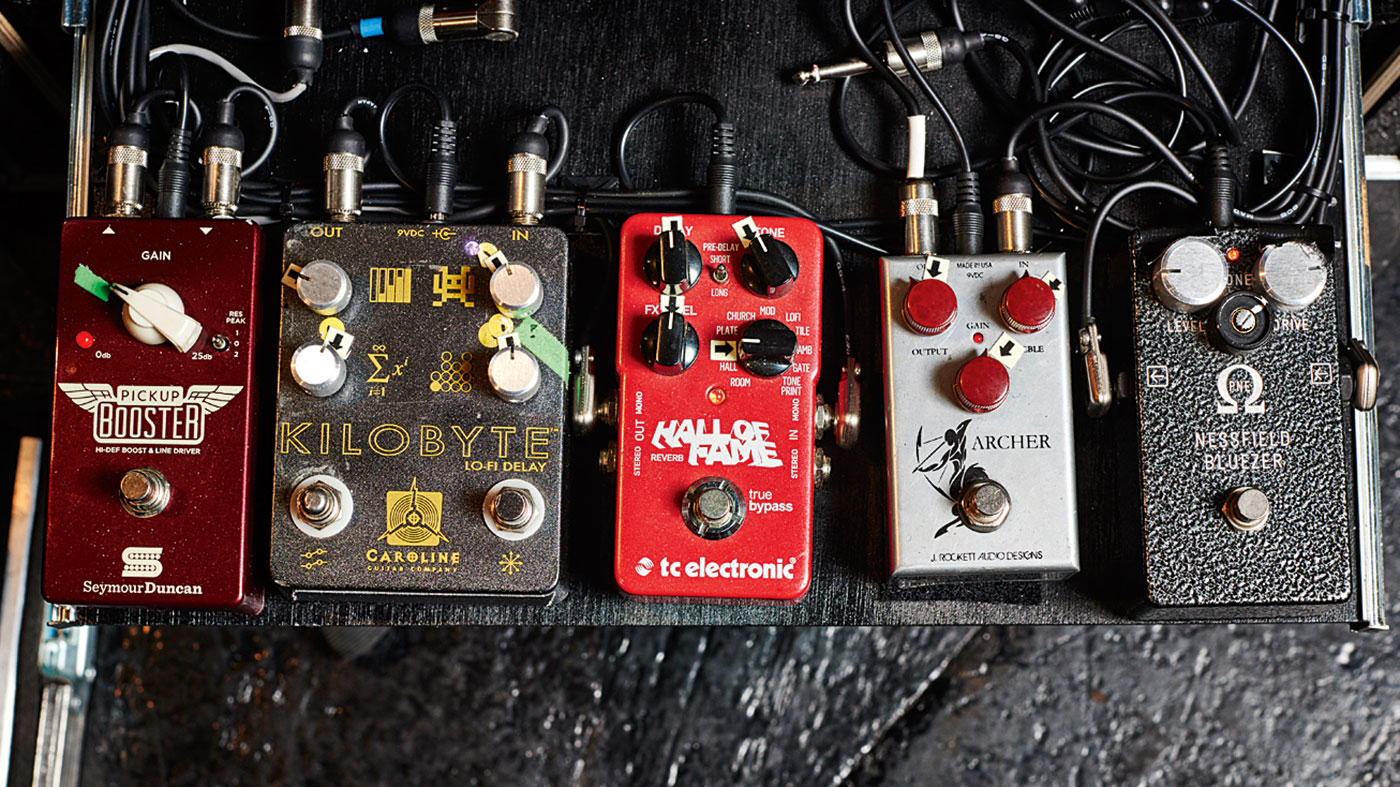
Pat: “The signal chain is roughly the same as it was a couple of years ago - I think a lot of the album was recorded with his old pedalboard. But going to this kind of system offers the opportunity to expand and go further. You just need to add on. John wants everything there and that’s why we went to the 22 [control].
“He switches to the [Nessfield] Bluezer instead of the Maxon for a different drive stage. Then he’s got an [J Rockett] Archer we call ‘Klon’ for obvious reasons - quite often he’ll use that for his Tele. He loves the Caroline Killobyte delay and I’ve modded it so that he can have the Havoc switch here [on the Mastermind], it’s the chaosy kind of repeat. When everything is starting to get a bit crazy and he wants it to get crazier, he uses that. But it’s a great delay. Seymour Duncan gave us that Pickup Boost to try and it’s great - it’s a straight-up boost.”
Maton Custom 11-string ‘Newie’ and six-string jumbos
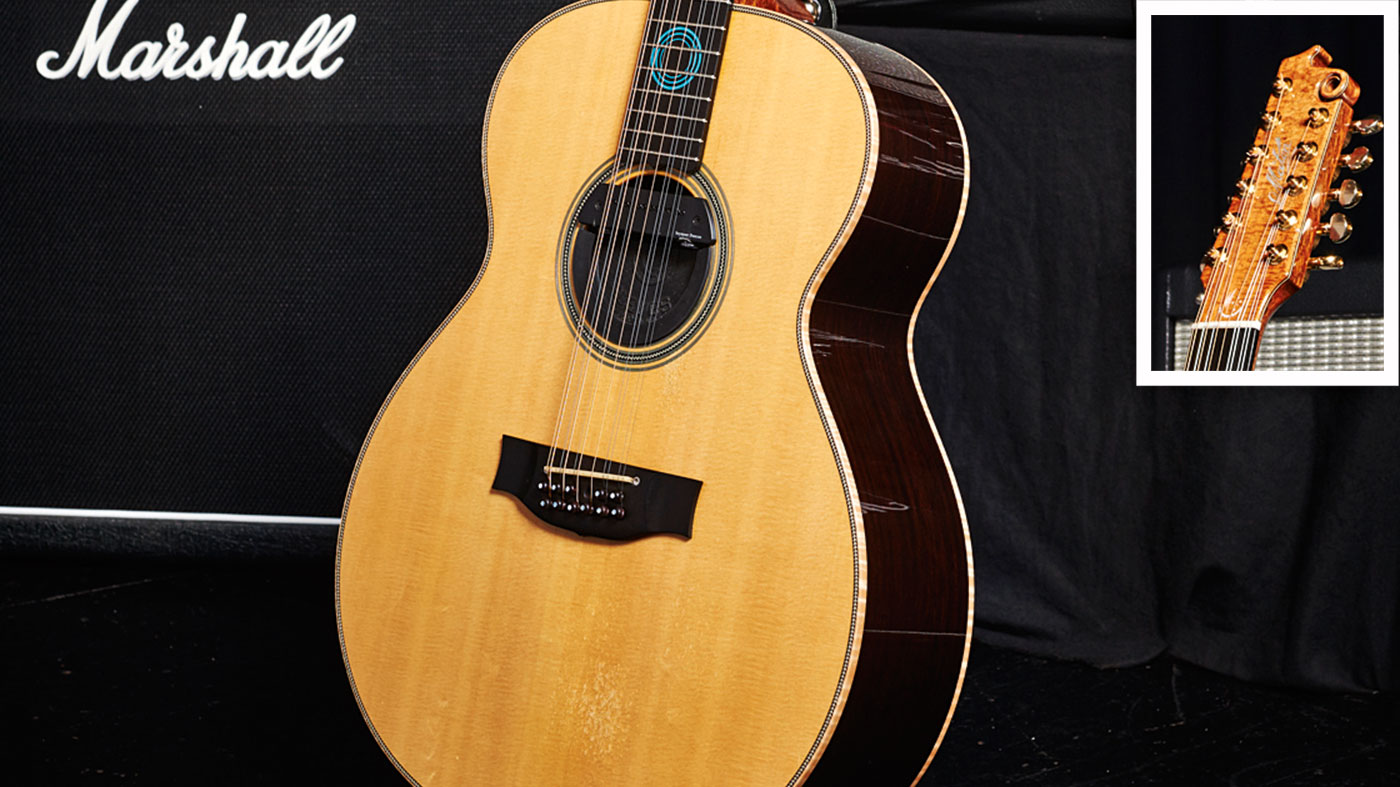
John: “The Maton is not a recreation of Oldie. It’s a jumbo. I designed a guitar for my wife’s band [Mama Kin] once that was my perfect guitar in terms of how can I fuse a Lowden European fingerstyle with an American jumbo kind of thing. I could pick and choose from all the models they had and it’s a jumbo, cedar top, Indian rosewood back and sides when they used to sell it. That six-string sounds so good and it’s one of the nicest I’ve played.
“I wanted to hear it in a 12-string [John removes the high G to make it an 11-string] but it needed a stronger top wood because cedar doesn’t really like to be hit very often [for percussive playing]. I created the same specs but with a spruce top that was like Oldie. It’s beautiful. It took a while to get used to because it’s so articulate, but it’s great. It’s funny, I’ve been playing Ocean and the band asked, ‘Are you playing new stuff for that?’ I’ve been playing it forever on Oldie but you couldn’t hear it. My playing feels much more precise and satisfying because before I couldn’t hear it when I was plugged in, it faded away. So Oldie has gone and ‘Newie’ is around.”
Fender Telecaster

John bought this US Standard Tele new back during the Flesh & Blood album era a few years ago - it’s used for Blame It On Me.
Bacon banjo John’s 1930s
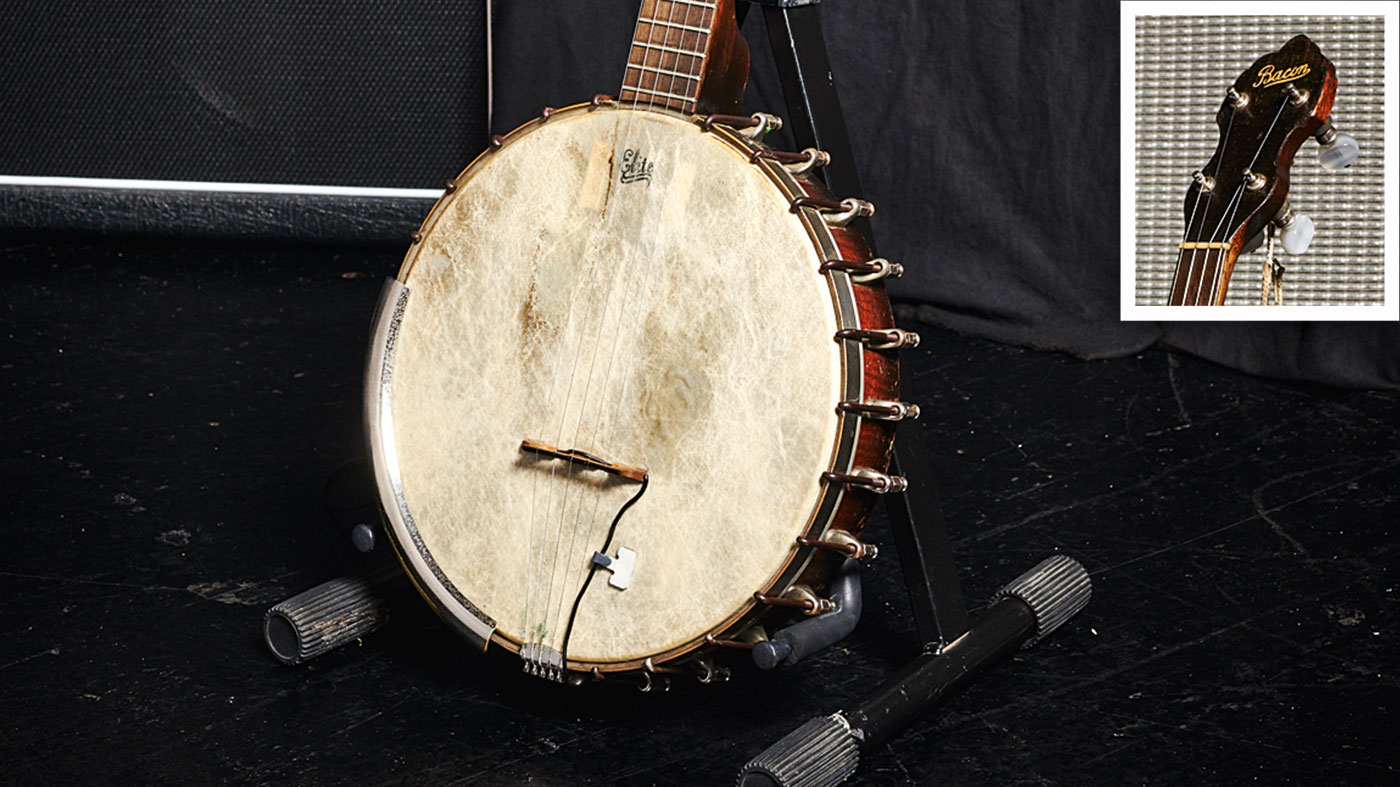
Bacon banjo is used for songs Better Than, Ragged Mile and Bound To Ramble and has both piezo and magnetic pickups.
Harmony Meteor
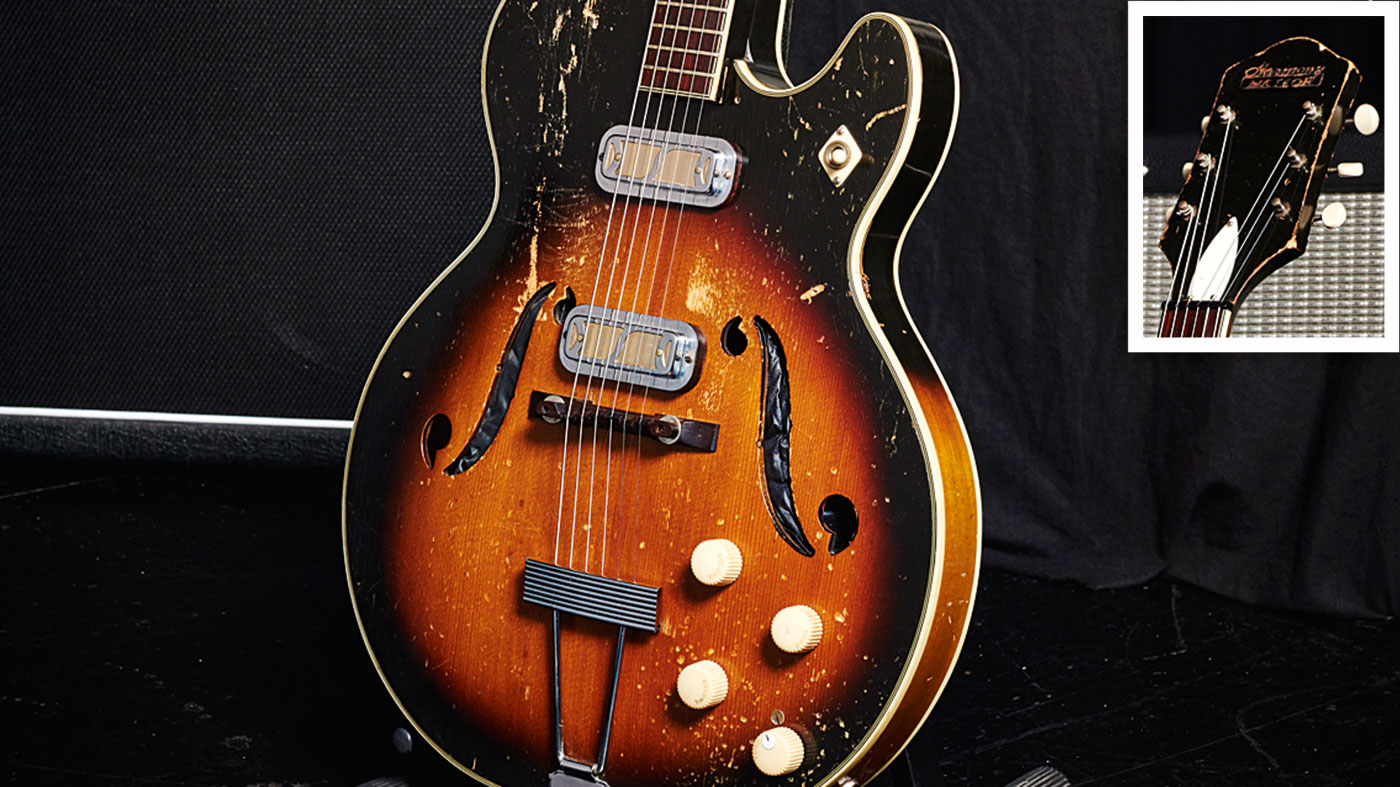
Another guitar that entered the rig for the Flesh & Blood era, this has DeArmond’s fabled Gold Foil pickups and pumps out some surprising Sabbathy tones at the end of Livin’ In The City live.
Marshall JMP MK2, JCM 800 2203 and Fender DeVille
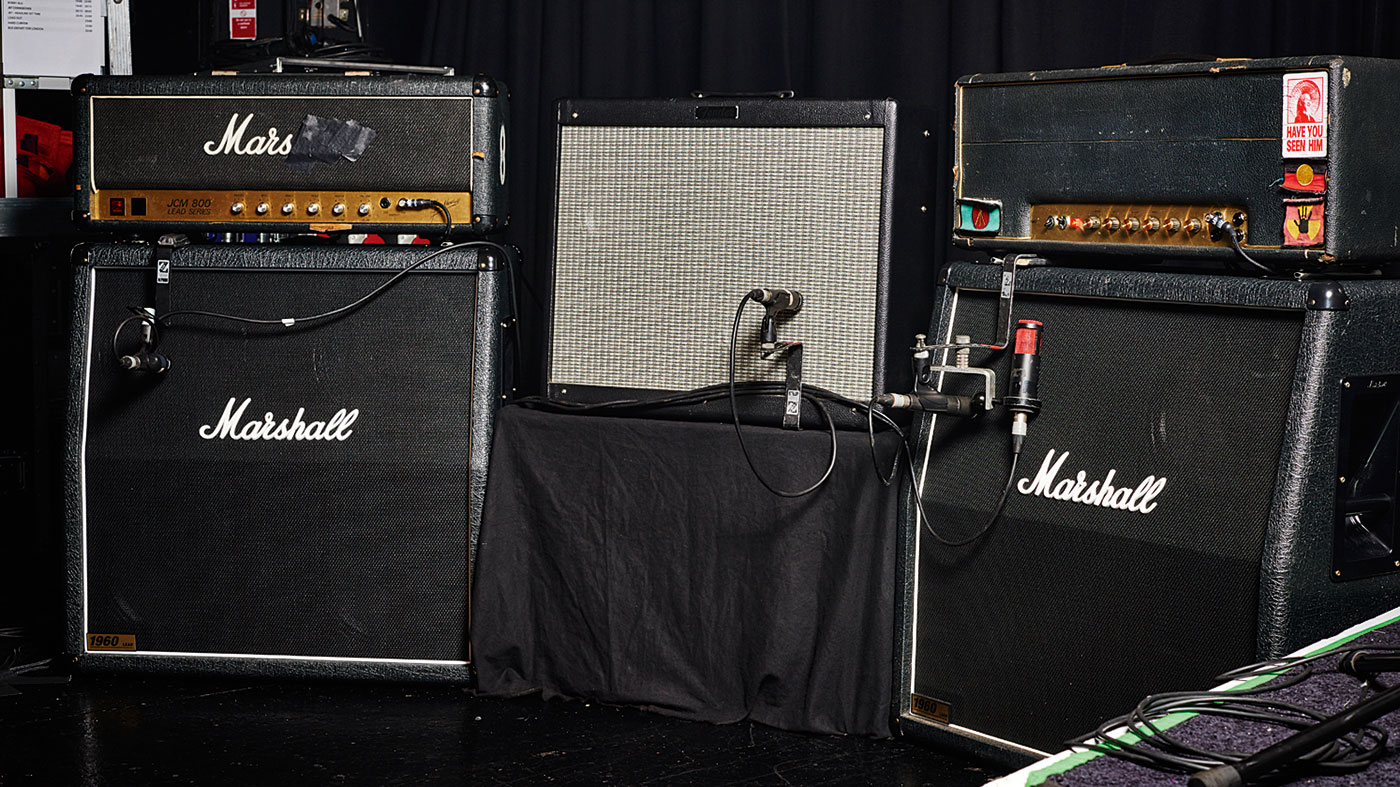
John: “Why two Marshalls? Usually sound pressure. I probably don’t need two tonight but when I start playing outdoors, for me it’s all about sustain. When you hit these notes with the volume pedal and it’s almost like you have an EBow on. And that needs a certain amount of volume and sound pressure. I want to be able to hit a note and go [makes long sustaining sound] - it’s all very Spinal Tap!”

Rob is the Reviews Editor for GuitarWorld.com and MusicRadar guitars, so spends most of his waking hours (and beyond) thinking about and trying the latest gear while making sure our reviews team is giving you thorough and honest tests of it. He's worked for guitar mags and sites as a writer and editor for nearly 20 years but still winces at the thought of restringing anything with a Floyd Rose.

